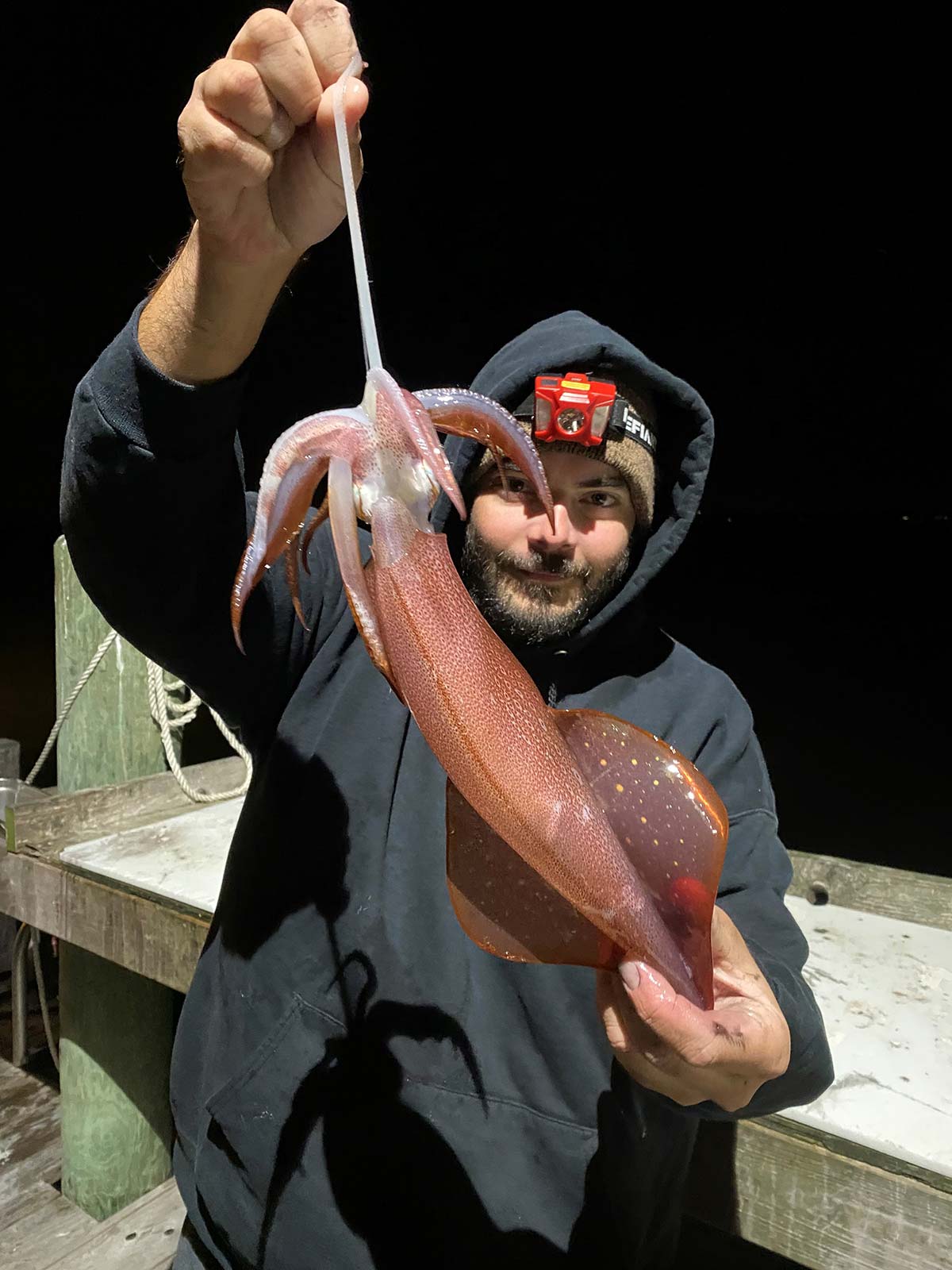
It’s time to get inked!
By the time mid-April arrives, I begin my hunt for those inky little cephalopods better known as Atlantic squid. Each spring, massive schools of this species enter the Peconic Bay estuary to spawn before moving back out to the deep, cool ocean waters sometime in June or July. Naturally, as the squid arrive, so do the commercial draggers looking to scoop up what they can and sell it off to fish markets as calamari. However, there are seasons when the squids elude the squid draggers and sneak into the Peconics practically unscathed. This often leads to late April and the month of May tasty calamari for anglers jigging at most East End docks lit at night.
I’m a big fan of fried calamari, especially when allowed to simmer in an Italian tomato sauce that is served over angel hair spaghetti. However, I leave the cooking of this delicacy to the fine chefs of many Italian and seafood establishments throughout Long Island. Those I snag through the spring are converted to fine freshly frozen bait, which will be graciously accepted by a slew of species that include anything from sea bass to bluefin tuna. Therefore, if you want to give squid fishing a shot, it’s time to get inked, as the following paragraphs will provide some pointers to help fill a bucket with these inky little phantoms.
A.K.A. Long Fin Squid
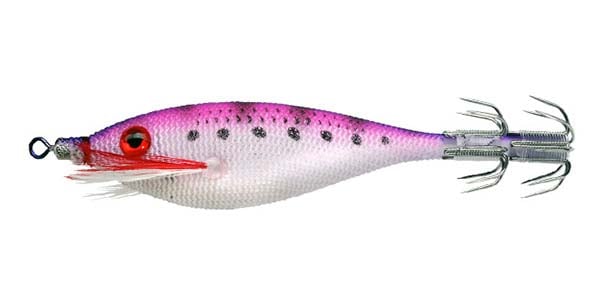
The Atlantic, also known as the long fin squid, is often seen with a reddish hue; however, like many types of squid, they can manipulate their color to blend in with their habitat. They can vary in color from deep red to soft pink. The dorsal mantle length of some males can reach up to 20 inches, although most squid commercially harvested are smaller than 12 inches. The longfin squid is found in Newfoundland to Cape Hatteras in the North Atlantic. The population makes seasonal migrations that appear to be related to bottom water temperatures—they move offshore during late autumn through the winter along the edge of the Continental Shelf and return inshore during the spring and early summer. Their diets can range from planktonic organisms for the juvenile squid, while larger individuals feed on crustaceans and small fish. The Atlantic squid is carnivorous, attacking just about anything smaller than themselves. When the squid are near the surface, they are also highly preyed upon by just about any animal, including sea birds. Mammals such as seals, whales, porpoise, sharks, and many bottom-dwelling fish species, including fluke, sea bass, cod, and dogfish, speedsters such as tuna, mackerel bluefish, and gamesters such as striped bass make a quick meal out of squid. Most often, when a squid senses trouble, it will squirt a cloud of ink, which usually leaves the predator confused as the squid will often escape like a phantom in the night.
Let There Be Light
There are times when squid will attack jigs during a bright midday sun, but that is more an exception than the norm. Squid fishing is strictly a night game that simply requires some sort of light. Lights are used around the world to attract squid to their demise. Anglers may employ nothing more than glow-in-the-dark jigs or go as serious as high-wattage surface lights. It is well known that many types of cephalopods and octopuses are attracted to just about any kind of light, brightening a small area of water. Oddly enough, most biologists are unsure what the attraction mechanisms of artificial lights and squid. There are many theories of light attraction among marine organisms. These include positive phototaxis, bright intensity, wavelength preference (color response), conditioned or unconditioned response where light is associated with food, curiosity, photic disorientation, and hypnosis. The first three possibilities are all built-in biological features. True or not, none of them are very satisfying. In fact, they’re almost tautological. You don’t need a scientist with a book full of philosophy concerning lights and squid. You can learn more by asking seasoned fishermen about their experience. The answer is simple—the heat of a high wattage lamp warms the water, which attracts the microorganism creatures, which attracts a myriad of forage baitfish; therefore, attracting the aggressive and predatory squid. As long as you light up the water, all else is irrelevant.
Style Of Light For Squid Fishing
This is the next obvious question, which is what style of light is best for squid fishing? Well, from what I found, the type of light you should get for squid fishing is more of a floodlight and not so much a spotlight. Regardless of the color, spotlights can often have inverse effects and essentially repel the squids you hope to catch. Instead, I suggest looking for more of a floodlight LED. This light style is much more appealing to squid and almost universally accepted among the fishing community.
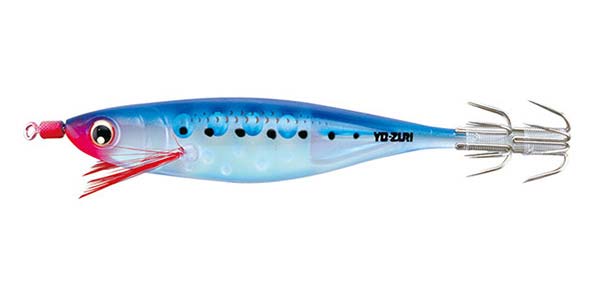
The next big thing is deciding on the color of light you wish to use. Now, this is a bit more up in the air as some people claim full-spectrum white lights do okay, while others insist only green lights or a combination of green and white lights will do the trick. For this, I suggest experimenting on your own, starting with one color of light (perhaps a green LED) and seeing how it works for a while, then trying a blue light. Both can work, but which will work best will likely be determined by the squid’s preference on any given night. IllumiSea Aquatic Light Co. has what you need for a great night of squid fishing using a 12-volt car battery that will work and attract fish in both salt and freshwater without costing you an arm and a leg.
Jigs, Jigs And Even More Jigs
A spinning rod and reel combo filled with 6 to 8-pound fluorocarbon line will allow you the cast around, especially when the squid are hanging out just outside the shadow of the light (more on this later). You will appreciate the light fluorocarbon line tied to a jig as squid can be very line wary—this should solve the problem. Jigs usually complete the terminal end, and my goodness, have you ever typed “squid jigs” on your favorite search engine? The shape, designs, and sizes are endless and would undoubtedly drive anglers new to squid fishing into the nuthouse. Rather than unnecessarily going through some of the riff-raff, let’s focus on the most popular line of Yo-Zuri squid jigs that have stood the test of time, season after season.
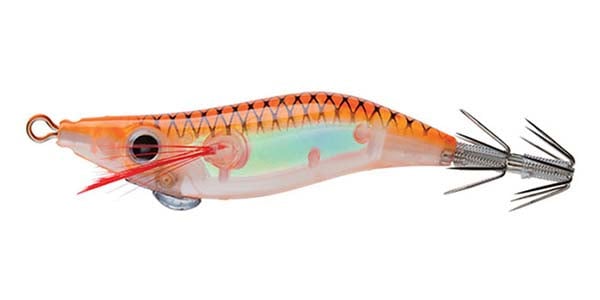
The five most effective styles consist of the Yo-Zuri’s Ultra Lens Aurora Series, which features a strikingly brilliant Holographic Internal Prism Finish and a body remarkably resembling scales on an injured baitfish. The Ultra Lens Aurora Squid Jig sinks at a rate of 6-inches per second and can be fished individually or in tandem. Next is the Ultra Cloth Squid Jig series, which is the latest addition to Yo-Zuri’s time-tested squid jig lineup. A strong ABS Resin material wrapped in a luminous cloth for a more realistic feel, this more delicate feel drives squid to attack longer for an increased hook up ratio. Small feathered pectoral fins, swivel line ties, and sharp sticky hooks will keep the ink flowing all night long. Next is the Yo-Zuri’s Laser Series, which features a strikingly bright metallic laser finish. The Laser Squid Jig also sinks at a rate of 6-inches per second and can be fished individually or in tandem. Super-sharp hooks and feathered pectoral fins make this a one-of-a-kind squid jig. The Yo-Zuri’s Ultra Bait series with strikingly brilliant and proprietary internal Holographic Prism Finishes contains “Glow-in-the-Dark” belly accents for added brightness, even in the murkiest waters. The Ultra Bait Squid Jig can be fished individually or in tandem. The Ultra Bait Squid jigs are floating-style, with the most effective method being in tandem (1-4 baits) with a lead sinker to get the jigs below the surface. This method allows the baits to be fished at all levels of the water column. Lastly is the Yo-Zuri’s Mini Squid Jig series features a strikingly brilliant Holographic Internal Prism Finish. Each Mini Squid Jig contains “Glow-in-the-Dark” belly accents for added brightness. This is also a floating jig and best suited with a tandem rig and a lead sinker to work much of the water column. These jigs come in assorted colors—having pink, white, and orange is paramount as they produce the most consistent. Blue, green, and purple have their times but are not always reliable.
How To Rig And Jig
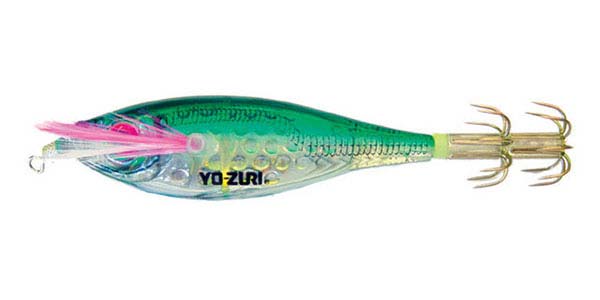
The reality of squid fishing is that catching is easy when the bite is on. The gray hair comes when the squid is reluctant to attack a jig. There are nights when squid bite best at last light. On other days, a tide change could be the premium time, or maybe when the water is clearing on a flood tide. When these conditions are met, I have often stumbled on the right color and size jig combination. However, at the height of the calamari season, from late April until late October, the time of the evening is not always relevant. It seems that when the water is clear, chances are you will catch calamari. Presentation is paramount, and while employing a single slow sinking jig will produce, a squid jig rig hands down will out produce all else.
A jig rig is made simply by taking a 10-foot length of 10-pound fluorocarbon leader tying three 6-inch Dropper Loops one foot apart from each other. On one end, tie a Surgical Loop Knot for a 1 or 2-ounce bank or cannonball sinker, then employ a Spro number 10 Power Barrel Swivel via an Improve Clinch Knot attached to the mainline. Slip each squid jig to each dropper, and you’re ready to go. The best way to fill a bucket with calamari is to drop the jig or rig to the bottom and slowly retrieve it back to the surface, then repeat the process. You can also drop back a few feet then retrieve the jigs. You will not feel a hit but rather a dead weight that may try to swim away. Once the squid is out of the water, it will spurt ink. Once you have a hold on the jig and turn it over to drop the squid in the bucket, get ready to get inked as one angry squid will make one last attempt to shoot you with ink, so beware.
Boat Technique
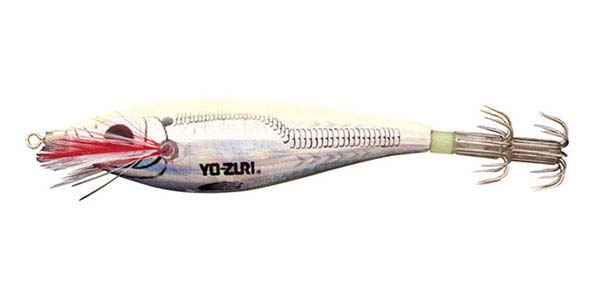
Sometimes the number of people fishing for squid either on the shore or the pier can be intimidating or slightly annoying. You also will technically compete with everybody else in your area. On the other hand, if you have a boat, you will be able to travel out away from anybody else to search for your schools of squid, allowing you to have the least competition possible.
One common technique for boat squid fishing is the act of essentially funneling squid from the deeper and darker parts of the water, all the way up to the surface next to your boat. This is done by lowering underwater LED lights deep underwater and bringing them slowly upward repeatedly until eventually, you have a collection of squid circulating a light near the surface. People who use this technique also have additional lights strapped to the hull of their boats, which allow them to keep lowering the underwater lights again and again while retaining the groups of squid next to their boats. Do this right, and with a fair amount of luck, you might just have an opportunity to jig loads of squid and end up calling it an early night.
Well, there you have it. Whether you are looking for fried calamari rings or long and fresh squid strips for big Shelter Island fluke, the local squid population should please everyone. You can put that on ink.



